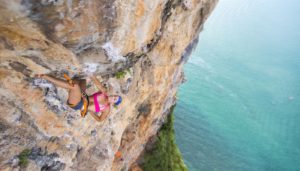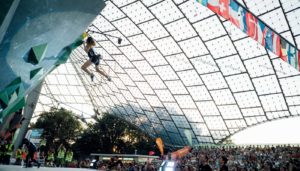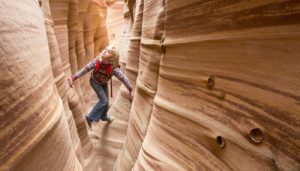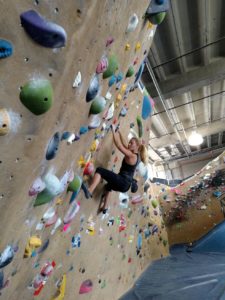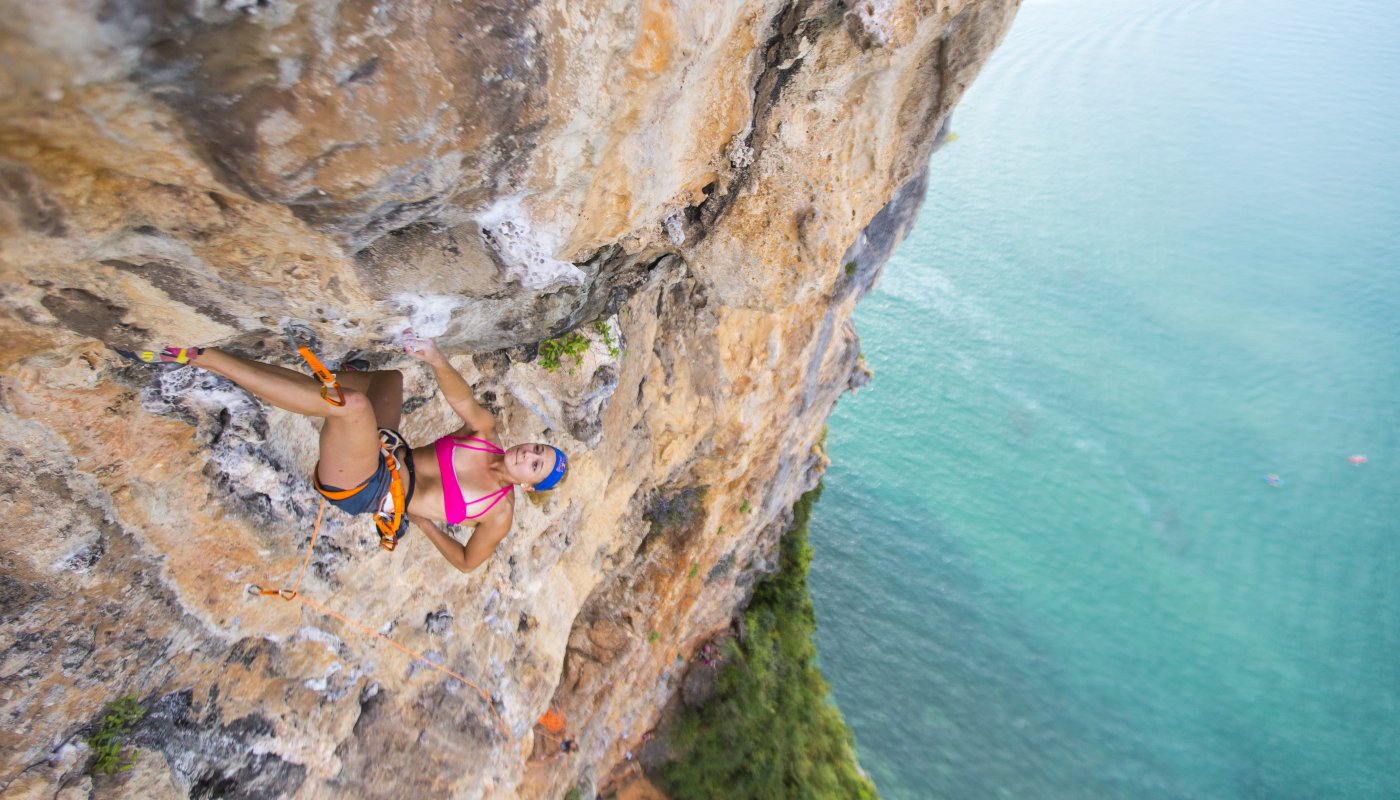
Sasha DiGiulian on Accepting Her Body
As a woman in climbing, I occupy two worlds: one defined by strength and grit, the other by beauty and traditional ideas of femininity. It’s something I still struggle with.
Last fall, hours before a red-carpet gala for the Women’s Sports Foundation in New York, I was getting ready in a hotel room with other pro female athletes. Noticeably, there was a plethora of different body types, from Olympic gymnasts and figure skaters to tennis players and skiers to snowboarders and race-car drivers to rowers and me—the rock climber. Each of us takes pride in the physical strength our respective fields require, and we also find joy in having our makeup done and wearing glamorous gowns for a night.
Red carpet events are a completely different side of my job than waking up on the side of a cliff, not having looked in the mirror in a couple days and proceeding to pull my hair back and climb. I live in both worlds: one that puts me in an environment highlighting beauty and femininity; the other valuing strength and grit.
Finding a dress for a gala can be tough. There is no one size for me, because often a size 0 dress fits until I try to zip the back up over my shoulders. I have broad shoulders and large lats, which are easy to scorn when I am trying on clothes—my body type isn’t accounted for. It’s easy to feel a sense of inadequacy.
I was born small; my mom is petite and my dad was not tall. When I was 18 and won the World Championships, I remember reading posts about me in online forums speculating that I was anorexic and attributing my success in climbing to my light weight. My perception of myself changed then. I started paying much more attention to my diet, how to maintain a youthful body frame, and became convinced that in order to climb hard, I needed to stay at a certain weight. This meant strictly watching my caloric intake and exercising excessively or feeling guilty, for instance, after indulging.
The issue with this is that our bodies change. I hit puberty at the end of my teens. This is typical for female athletes, especially when active at an elite level. When I graduated high school in 2011, I dedicated a year to just training and climbing. At the end of that year, when I enrolled at Columbia, I settled into a more stagnant lifestyle and my body caught up with me. I gained just over ten pounds, which is noticeable considering I was shy of 100, and developed broader shoulders, hips, and a butt. I no longer had the body of a prepubescent girl.
With these changes came a new challenge: self-acceptance.
As our female bodies mature in climbing, we need to replace litheness with strength. So I began lifting weights. As a result, my body changed again. My shoulders expanded and my back grew sturdier. While I had long believed that leg work was irrelevant to climbing—the sport is largely upper-body dominant—I became more focused on building power to explode from my quads. Suddenly, though, my clothes no longer fit. I needed to go shopping, and I was not ready to accept my new look. That would take time. It still does.
Of course, I’m not the only athlete who struggles with my body image. A good friend of mine, Emily Harrington, who is a professional climber wrote to me in an email that she struggled “super hard with it throughout my career.”
“I wrapped my identity and self-worth up into how hard I climbed and even the number on the scale—equating success in climbing, extreme self-control and deprivation with being a good human being,” Emily wrote. “It affected my self-confidence, my health, my relationships, everything.”
It’s hard to let go of the idea you have in your head of how you should look, she says, because it’s wrapped up with the success she had as an athlete. “I know it hurt me in a lot of ways, but it also helped get me to where I am today,” Emily wrote. Looking back, though, she wonders if she could have changed her thinking earlier and adopted a healthier approach to training and a more positive attitude about her body. “That phase of my life definitely left a bit of a scar, or some sort of trauma, that I don’t think will ever go away,” she wrote. “I hope that I can help positively influence future young climbers—boys and girls—to have a healthy mindset and perspective on their bodies and their health so they avoid having to go through that pain in their lives.”
I’ve been trying to change the way I think about my body recently. While in the dressing room before a gala, I need to remind myself: these lats that are preventing my dress from zipping up are the tools that I have to do my sport. They are what set me apart; they make me unique. From my crooked, callused fingers to my bunion toes, my body is my own. I do not owe this look to anyone else.
We as women need to have this type of correspondence with ourselves. We need to recognize what we appreciate about our bodies, highlight what we are proud of, what we’re good at, and feel inspired by, and face what we do not like. Self-esteem is the prerequisite to gender equality.
When I am in a room full of accomplished female athletes, representatives of different sports with an array of different accomplishments, like I was before the gala last fall, I feel powerful on the inside. We as women need to accept ourselves and each other and to support each other; to see each other not as competitors, but as a part of a movement to redefine standards.
